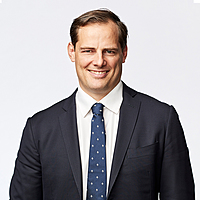To enjoy this stock market party, do you really have to dance near the door?
The headlines would indicate it's party time in global markets.
- The Nikkei is partying like it's 1989. Reaching all times highs not seen since the Japanese asset price bubble of the late 80s.
- The S&P 500 has now hit 25 new record highs this year alone.
- The NASDAQ powered to a new all-time-high this week, and;
- Here in Oz, the ASX 200 set a new record in March and the index looks to be testing this once again.
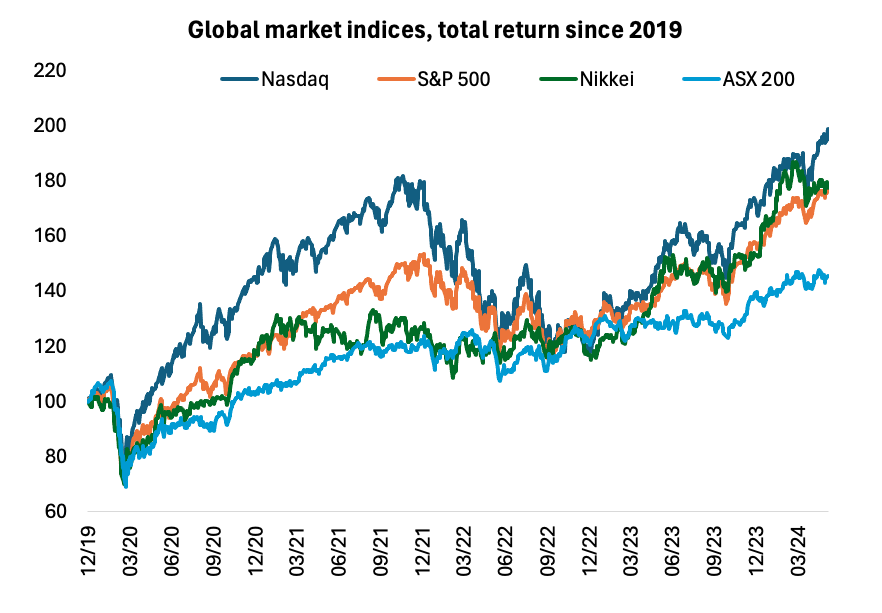
Source: Plato Research, Factset, May 31, 2024
But it does appear to be a somewhat subdued party.
The most common topics being discussed come with cautionary undertones.
Will the magnificent seven continue to power markets forward? Is the global economy about to fall into a cycle of defaults and despair?
There's another question I've been hearing from Plato clients a lot lately... Is this the tech bubble all over again?

Not the tech bubble
Comparing the recent growth in markets to the run-up preceding the tech wreck of 2000 is flawed.
In the tech bubble, concept stocks with little revenue (let alone free cashflow) were trading at sky-high valuations. Remember Pets.com? Valued at $300 million with revenues of a mere $5.8 million and $61.8 million of net losses.
This ain’t that.
The likes of Nvidia, Meta, Microsoft and Amazon are throwing off a proverbial tsunami of free cash flow - collectively $182 billion over the last twelve months.
By comparison BHP generated just $11.6 billion in free cash flow over the same period.
This is not to mention Novo Nordisk and El Lilly, the geniuses behind the anti-obesity drugs that Goldman Sachs projects to gross $100 billion a year by 2030.
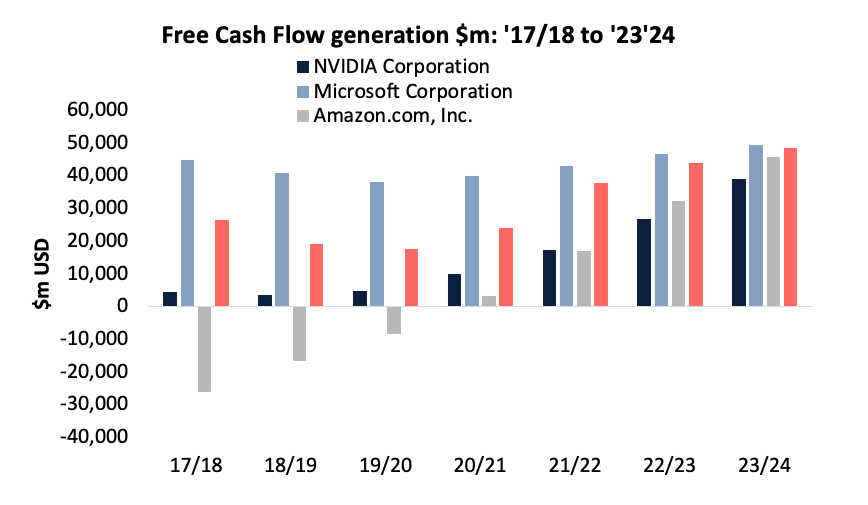
Source: Plato Research, Factset, May 31, 2024
The top end of the market is in rude health - underpinned by trillions of investment into AI, defence, and infrastructure.
But this all belies the rising wave of corporate defaults, which is prompting investors to keep one eye firmly fixed on the exit.
Pockets of the market are increasingly stressed
According to S&P Global, year-to-date global defaults of listed companies are at their second highest level since the global financial crisis and almost 40% above the ten-year average.
Europe in particular is of concern, with a 60% increase in defaults from 2023.
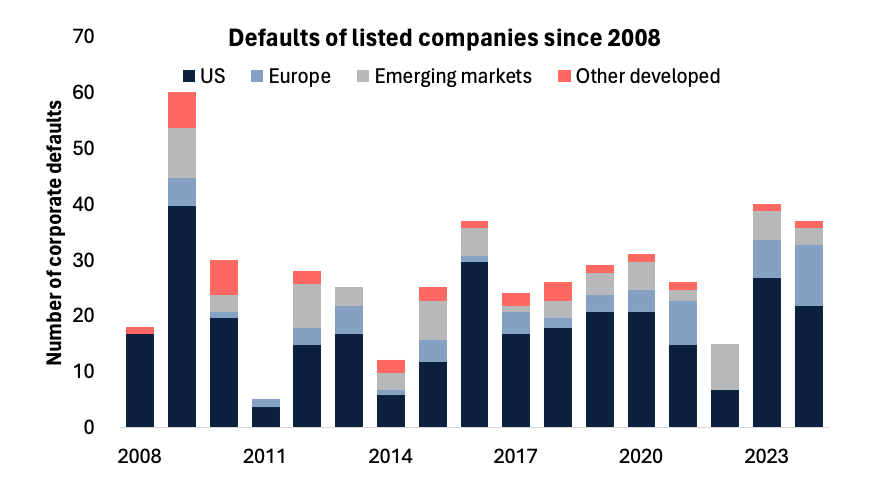
Source: S&P Global Ratings Credit Research and Insights, March 31, 2024
In Australia, as previously reported by Christopher Joye of Coolabah Capital, we are witnessing the highest level of corporate insolvencies since ASIC started reporting the data.
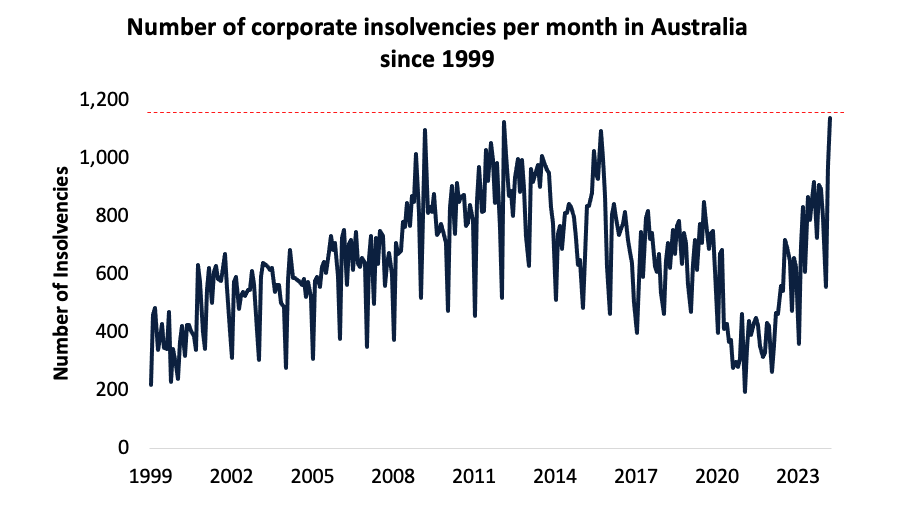
Source: ASIC, May 31, 2024
So, what is the best way to play a bifurcated market?
Investors worried about the unstable underbelly of the economy could easily miss out on the once in a generation wealth creation opportunity at the top end.
But we believe there is a way that your global equities portfolio can enjoy the party, without having to dance too closely to the door... By going long the growth opportunities above, while taking short positions in the distressed segment of the market.
The Plato Global Alpha Fund does exactly this.
At the top end, we are long the phenomenal cash flow generators above.
On the short side we use our 150 systematised Red Flags to take short positions in companies we believe will materially underperform.
Our research shows that, on average, if a company has eight or more Red Flags it will underperform the market by 20% over the next twelve months.
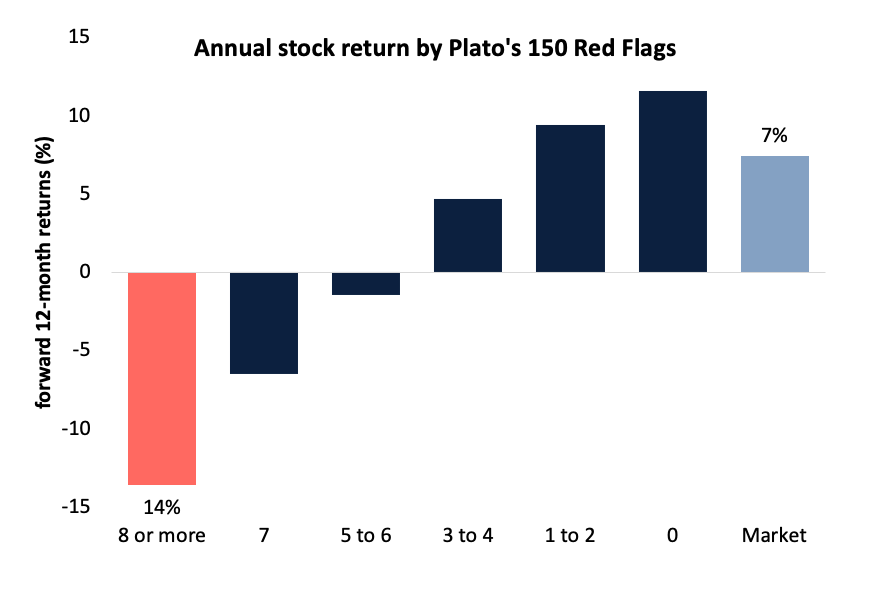
Source: Plato Investment Management. MSCI World All Cap universe, 1/1997-12/2023
Some companies Livewire readers will be familiar with in which the Plato Global Alpha Fund is currently short are LendLease, Liontown, and Tabcorp. These are outcomes of our Red Flags modelling.
Our top 5 contributors over the past 12 months (to May 31) have been, Nvidia, Microsoft, Amazon, Broadcom, and Meta Platforms.
Since inception (1 September 2021) the Plato Global Alpha Fund has delivered 18.5% per annum after applicable fees, costs and taxes. The fund has generated 70-80% of its alpha from shorts. Remember, past performance doesn't reliably indicate future performance.
Invest with the Plato Global Alpha Fund
The Plato Global Alpha Fund is an all-weather long/short global equities strategy, managed by the highly-experienced Plato Investment Management team.
Plato manages over $15 billion on behalf of large institutions, financial advisers and their clients, HNW investors, SMSFs, and retail investors.
More about the Fund and its portfolio can be found here.
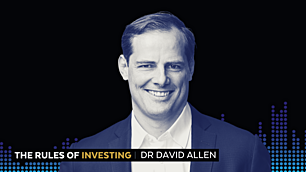.png)
1 topic
7 stocks mentioned
1 fund mentioned
1 contributor mentioned
